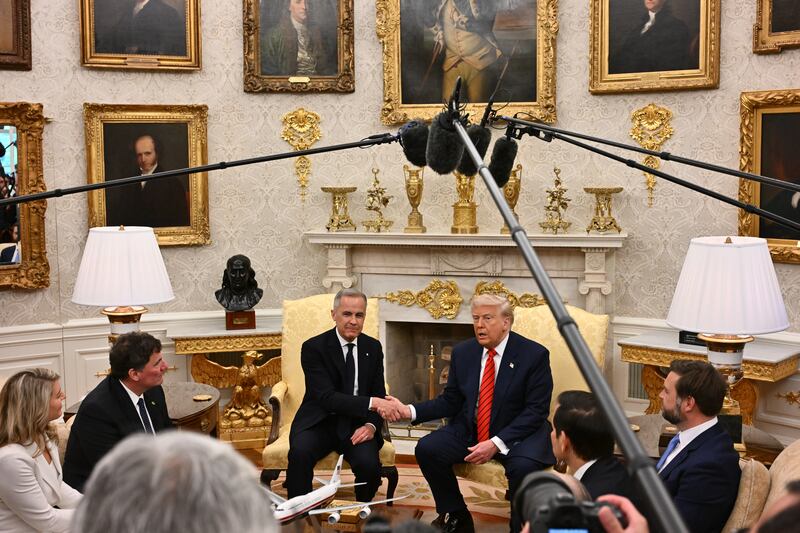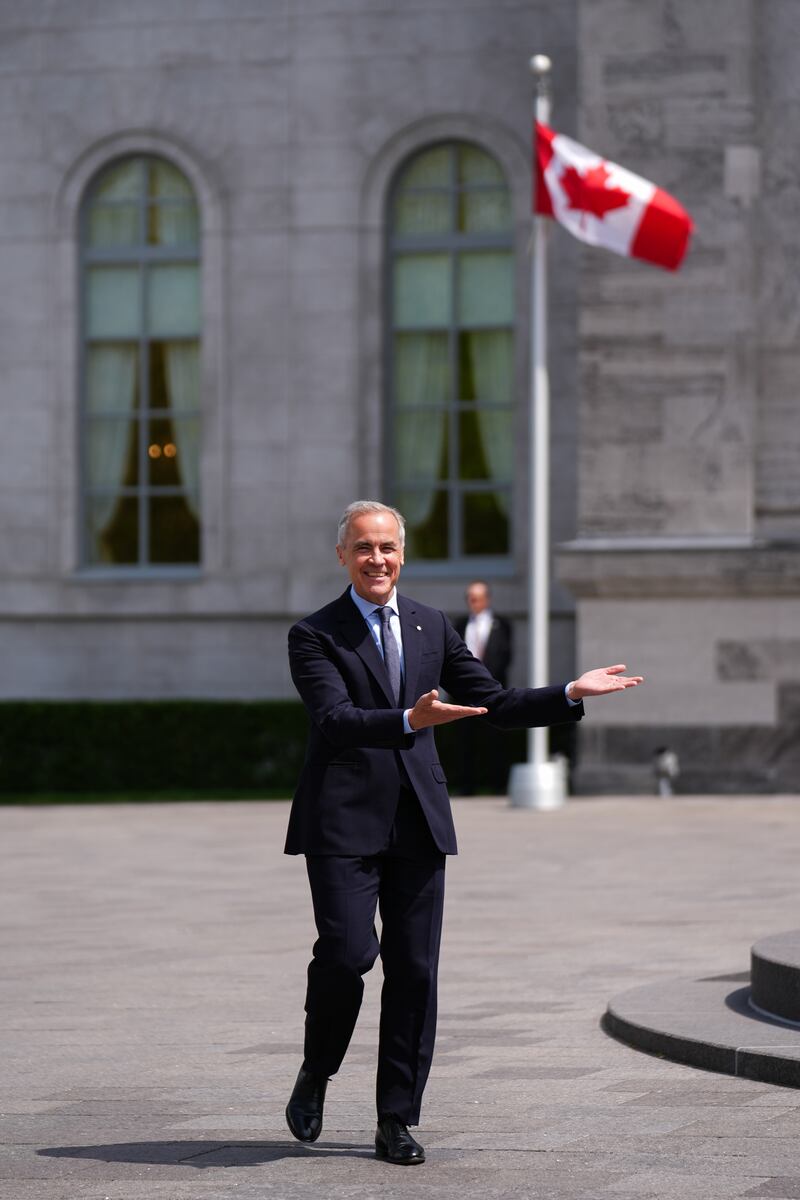The United States first tried to conquer Canada in 1812. Its troops were repelled and British and Canadian forces marched on Washington, where they set fire to the White House. It was a clear message: Canada wasn’t interested in becoming America, and recent Canadian elections suggest that’s still the case.
But we have, nonetheless, come to believe that Donald Trump is right. The United States and Canada should merge, with a few variations on his theme. Instead of annexation, we propose a polite, deliberate and ultimately healing act of national reinvention that will help protect American democracy through the next few years.
Specifically, recently-elected Canadian Prime Minister Mark Carney would replace Donald Trump as President, each of Canada’s 10 provinces would gain statehood, our Supreme Court would adopt some house rules and precedents established by its Canadian counterpart and Ottawa would replace D.C. as the capital.
We won’t bore you with what you already know. Suffice it to say, Trump’s bio includes two impeachments, four indictments, 34 felonies, a so-so business record in real estate and casinos—many of which filed for bankruptcy—and copious bragging that he is a great TV personality and marketer, especially of himself.

So now consider Mark Carney. Americans may not know his name, but they should. He embodies everything we should want in a President. He was born in a small, hardscrabble town in the Northwest Territories, attended Harvard on a partial scholarship where he studied economics, and then Oxford, where he earned his doctorate.
Although he was a third-string goalie at Harvard, the toughness, decisiveness and cool under pressure learned on the ice—goalies routinely put themselves between the net and a rocketing slapshot—served him well when he was a top central banker in Canada and Britain: After 13 years at Goldman Sachs, he chose to leave business for public service, joined the Bank of Canada, and served as its Governor for five years before becoming the first non-Brit to hold the position of Governor of the Bank of England from 2013 to 2020. Then he became Chair of Bloomberg L.P.
He reversed the sharp decline in Liberal party popularity during the Trudeau years by appealing to the center against more polarized opposition. His foreign policies address domestic concerns, but he also believes in allies and alliances.
Carney is known for his clarity, curiosity and sense of public service. He is a leading voice addressing climate change and income inequality. As Trump offers trickle-down fantasies and handouts to billionaires, Carney has advocated for sustainable finance and inclusive growth. His economic leadership reflects fundamental respect for institutions and facts—a worldview diametrically opposed to Trumpism.
While Carney is erudite, he is far from stuffy, although he, like Trump, should stay off the dance floor. He certainly seemed at home sitting with Trump in the White House earlier this month, even though they failed to resolve tariff issues and Carney repeated that Canada would “never” be for sale, prompting Trump to reply, “Never say never.”

Instead of Canada becoming the 51st state, granting statehood to each Canadian province is more logical. The average population of its ten provinces—about 3.2 million people—is greater than that of about a dozen U.S. states. Ontario’s 16 million people would make it America’s fifth most populous state.
We can learn from Canada. Canadians enjoy a public education system that surpasses America’s, a healthcare system that functions well—life expectancy is four years longer—and sensible gun policies. Canada also offers lessons in inclusion: French-speaking Canadians historically felt marginalized until bilingualism became a national priority. Today, Canada’s leaders, including Carney, operate in both English and French—some more fluently than others—but they share a unity in principle.
The Canadian Supreme Court’s rule mandating retirement at age 75 should be embraced, as should the country’s Charter of Rights and Freedoms, which offers a uniquely Canadian vision of justice that embraces controversy and views pluralism and diversity as a unifying force. (In contrast, the U.S. Supreme Court is more likely to see such factors as fragmenting.) Canada’s Supreme Court legalized gay marriage before the U.S. Supreme Court did, and it has approved, albeit controversially, assisted suicide.
Trump is correct in stating that the two economies are already deeply intertwined. Canada is the United States’ largest trading partner, and the two share tightly integrated automotive, agriculture and energy sectors. The U.S. has long benefited from Canadian talent, especially in media and entertainment. Lorne Michaels gave America Saturday Night Live, Graydon Carter transformed Vanity Fair and other notable Canadians have long shaped American culture from behind the scenes. Trump’s push for increased tariffs on Canadian goods not only strains that relationship; it’s economic self-sabotage. A true merger would eliminate these artificial barriers and strengthen the prosperity both countries have built together.
Finally, placing our new capital in Ottawa might address Elon Musk’s civil service attrition fantasies. Government employees who agree to move to one of the world’s coldest capitals will find it preferable to Ulan Bato or Moscow. It’s a perfectly nice place to raise a family—and skating the Rideau Canal to work certainly beats Beltway traffic. All you will need is good manners and long johns.
Norman Pearlstine is an American journalist who has held senior positions at The Wall Street Journal, Time Inc., Bloomberg, Forbes, and the Los Angeles Times. Jane Boon, who was born and raised in Ottawa, holds a Ph.D. in engineering and is the author of the novels “Edge Play” and “Bold Strokes.” The couple splits their time between New York and Vancouver.
The post Opinion: Why It’s Time for the U.S. and Canada to Merge—With Carney in Charge appeared first on The Daily Beast.




